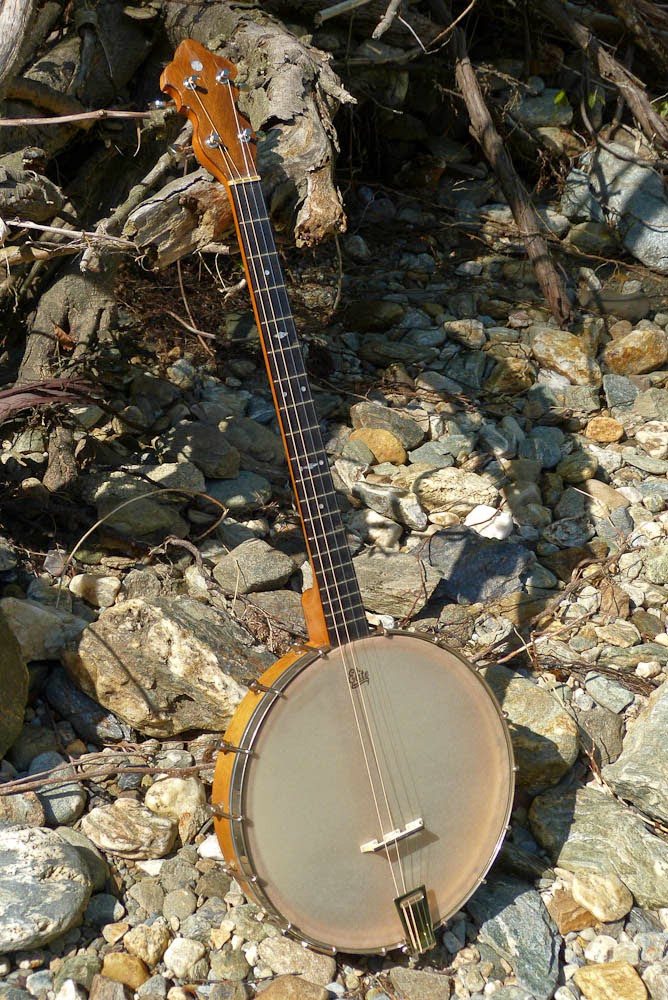c.1925 Gretsch-made Openback Tenor Banjo
This banjo walked into the shop via a trade/purchase deal and since then it's gotten a fret level/dress, new Remo Renaissance head, new bridge, tailpiece, and a set of guitar-style machines added at the headstock. I was shooting for a superbly practical economy instrument and... it is: it plays right... and sounds right!
These Gretsch-made instruments (many branded "Clarophone") come in all sorts of flavors: some with tonerings, some without... some with big old resonators, some with bizarre second internal rims... but this a very plain Jane model with no tonering, a simple 16-hook rim, and a long 23" scale. These characteristics give it a nice-sounding old-timey tone that's equally at home with flatpicking fiddle tunes or fingerpicking chords for singing with. It's simple but very useful and the long scale gives it a bit more chime and sustain compared to your average 20-21" scale tenor of the same specs.
The guitar-style tuners give this a slightly "bugeyed" look but for someone learning tenor banjo or doubling on it coming from something like guitar they're infinitely easier to use than friction pegs. There's a reason Pete Seeger did the same with his own banjo...
Normally I wouldn't swap out for guitar-style tuners but the original pegs had bent shafts and were thus not particularly useful. I took it as an omen and popped on these on a whim. Note that two wind "reverse" from normal but that's no worry since the strings have plenty of clearance from the other tuners' shafts.
The board is "ebonized" maple but the pearl is the real stuff. The neck has a fast, thin feel.
New adjustable tailpiece... plus new (compensated, 5/8" tall) Grover bridge.
There's that typical Gretsch "volute" at the bottom of the headstock. I've bent and ground the tuner plates to match the profile on the back of the headstock so they sit correctly.
The two-piece maple neck with 3-line center strip reinforcement is nice and straight.
The rim hardware is all original except for one (very closely matching) parts-bin hook/shoe/nut set.
This banjo came with a neck brace that was non-adjustable and thus not useful at all. I've modified this to use a bolt/large nut join instead. This is very secure and tightens up snug. This is essentially the same method used on Gibson instruments from the time.
The rim is entirely maple as well.
This is a brand new tailpiece though I removed its small cover to give it the look of an older-style one.















Comments